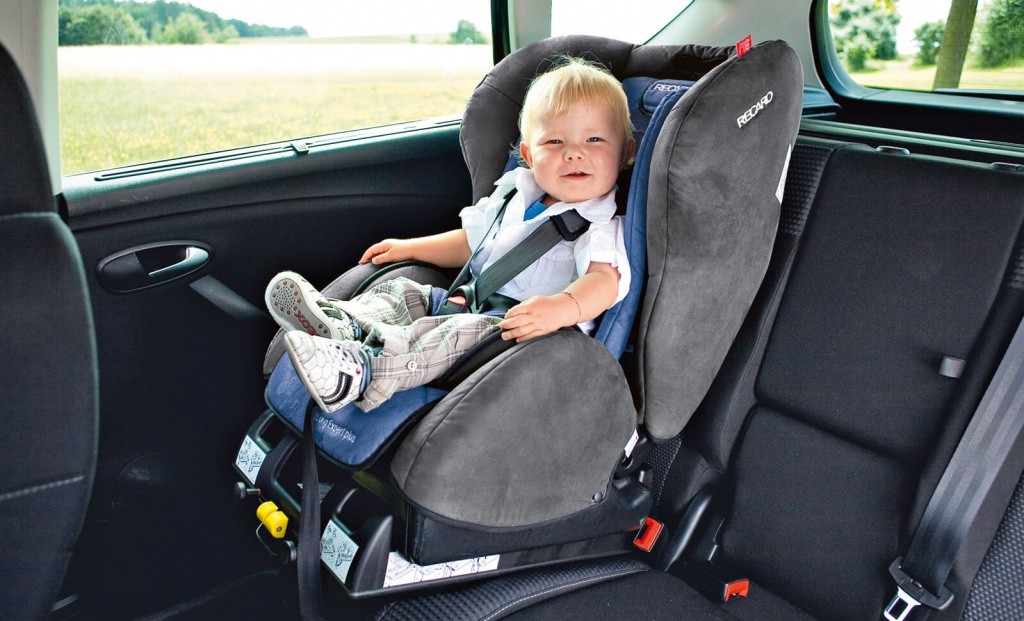
Child seat safety laws in all states
According to the American Association of Pediatrics (AAP), children under the age of 13 should always ride in the back seat of a car in a car seat that is appropriate for their height, weight, and age.
There are currently three different general categories of child safety seats:
- Rear-facing child safety seats. These seats are designed for use from newborns up to the maximum weight indicated on the seat, typically 22 to 45 pounds. They may be designed for vehicle use only, or may be part of a stroller system that attaches to a vehicle-mounted base.
- Forward-facing child safety seats. Forward-facing seats are designed for children who have outgrown the demands of rear-facing seats. There is a wide range of weight tolerances depending on style and manufacturer. As a general rule, children should use a forward-facing child safety seat until at least 4 years of age.
- Additional seats. For children who have outgrown a forward-facing child safety seat, it is recommended to use the booster seat until they are 4 feet 9 inches tall and between 8 and 12 years of age.
Another important piece of the puzzle is knowing where the child seat should be installed. It is widely recommended that children be securely strapped into the back seat of their child car seat at all times. However, where is the best place to install a child seat?
Child seat requirements may vary depending on the state in which you are traveling. Here are the state-specific guidelines for where a child seat should be installed in a car:
- Child seat safety laws in Alabama
- Child seat safety laws in Alaska
- Child seat safety laws in Arizona
- Child seat safety laws in Arkansas
- Child seat safety laws in California
- Child seat safety laws in Colorado
- Child seat safety laws in Connecticut
- Child seat safety laws in Delaware
- Child seat safety laws in Florida
- Child seat safety laws in Georgia
- Child seat safety laws in Hawaii
- Child seat safety laws in Idaho
- Child seat safety laws in Illinois
- Child seat safety laws in Indiana
- Child seat safety laws in Iowa
- Child seat safety laws in Kansas
- Child seat safety laws in Kentucky
- Child seat safety laws in Louisiana
- Child seat safety laws in Maine
- Child seat safety laws in Maryland
- Child seat safety laws in Massachusetts
- Child seat safety laws in Michigan
- Child seat safety laws in Minnesota
- Child seat safety laws in Mississippi
- Child seat safety laws in Missouri
- Child seat safety laws in Montana
- Child seat safety laws in Nebraska
- Child seat safety laws in Nevada
- Child seat safety laws in New Hampshire
- Child seat safety laws in New Jersey
- Child seat safety laws in New Mexico
- Child seat safety laws in New York
- Child seat safety laws in North Carolina
- Child seat safety laws in North Dakota
- Child seat safety laws in Ohio
- Child seat safety laws in Oklahoma
- Child seat safety laws in Oregon
- Child seat safety laws in Pennsylvania
- Child seat safety laws in Rhode Island
- Child seat safety laws in South Carolina
- Child seat safety laws in South Dakota
- Child seat safety laws in Tennessee
- Child seat safety laws in Texas
- Child seat safety laws in Utah
- Child seat safety laws in Vermont
- Child seat safety laws in Virginia
- Child seat safety laws in Washington DC
- Child seat safety laws in West Virginia
- Child seat safety laws in Wisconsin
- Child seat safety laws in Wyoming
In addition to placement, it is important to know the correct car seat and know the child seat safety laws in your state. Bookmark this page and refer to it when you travel to another state or when your child has switched to a different type of child seat.
